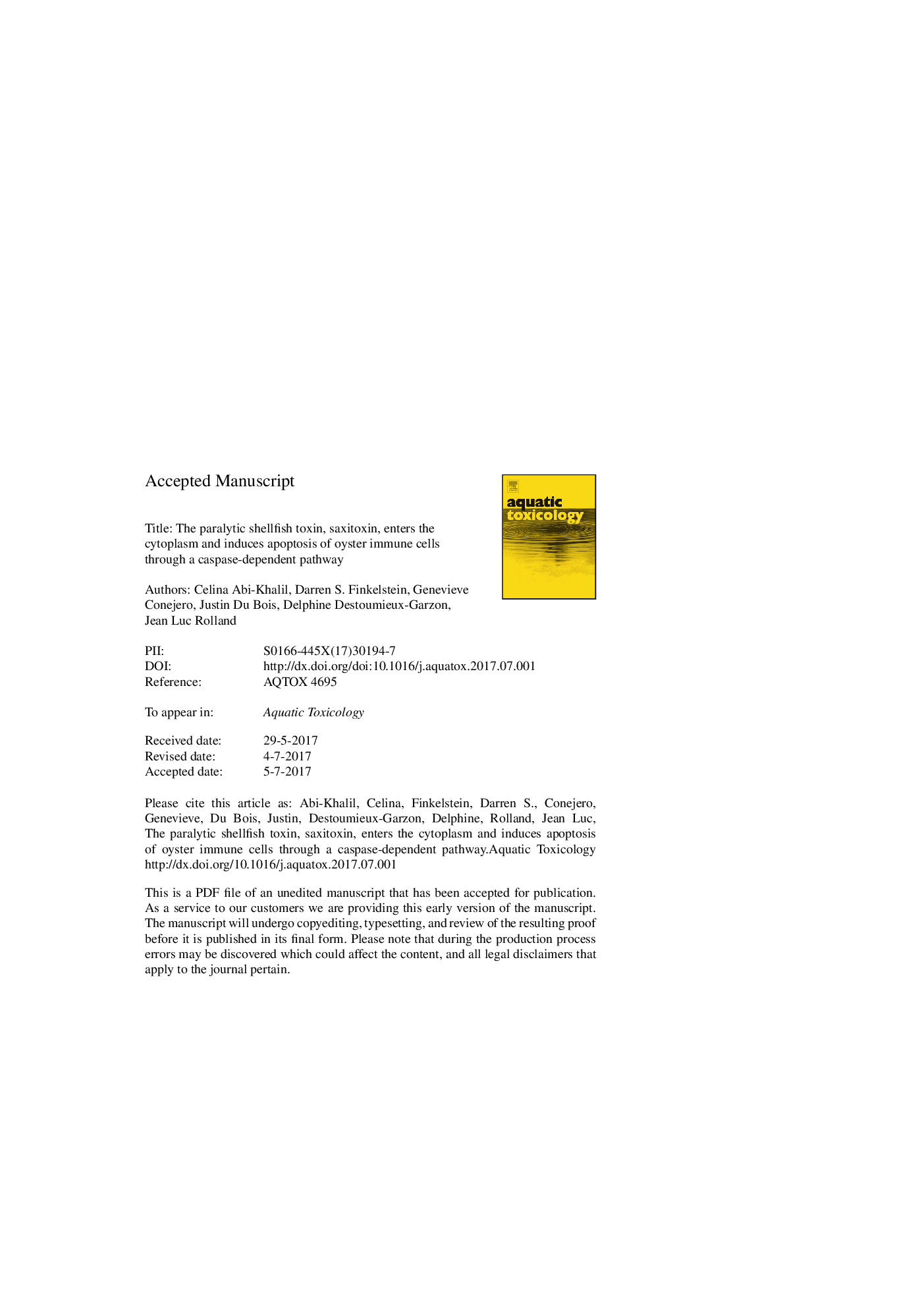| کد مقاله | کد نشریه | سال انتشار | مقاله انگلیسی | نسخه تمام متن |
|---|---|---|---|---|
| 5764276 | 1625915 | 2017 | 41 صفحه PDF | دانلود رایگان |
عنوان انگلیسی مقاله ISI
The paralytic shellfish toxin, saxitoxin, enters the cytoplasm and induces apoptosis of oyster immune cells through a caspase-dependent pathway
ترجمه فارسی عنوان
توکسین فروکتیو اسیدهای سقفی، سکسیتوکسین وارد سیتوپلاسم می شود و آپوپتوز سلول های ایمنی صدف را از طریق یک مسیر وابسته به کاسپاز
دانلود مقاله + سفارش ترجمه
دانلود مقاله ISI انگلیسی
رایگان برای ایرانیان
کلمات کلیدی
خرگوش توکسین، جلبک های مضر، فیتوپلانکتون،
موضوعات مرتبط
علوم زیستی و بیوفناوری
علوم کشاورزی و بیولوژیک
علوم آبزیان
چکیده انگلیسی
Exposure of the toxin-producing dinoflagellate Alexandrium catenella (A. catenella) was previously demonstrated to cause apoptosis of hemocytes in the oyster species Crassostrea gigas. In this work, a coumarin-labeled saxitoxin appeared to spread throughout the cytoplasm of the hemocytes. PSTs, including saxitoxin, were also shown to be directly responsible for inducing apoptosis in hemocytes, a process dependent on caspase activation and independent of reactive oxygen species (ROS) production. A series of in vitro labelling and microscopy experiments revealed that STX and analogs there of induced nuclear condensation, phosphatidylserine exposure, membrane permeability, and DNA fragmentation of hemocytes. Unlike in vertebrates, gonyautoxin-5 (GTX5), which is present in high concentrations in A. catenella, was found to be more toxic than saxitoxin (STX) to oyster immune cells. Altogether, results show that PSTs produced by toxic dinoflagellates enter the cytoplasm and induce apoptosis of oyster immune cells through a caspase-dependent pathway. Because of the central role of hemocytes in mollusc immune defense, PST-induced death of hemocytes could negatively affect resistance of bivalve molluscs to microbial infection.
ناشر
Database: Elsevier - ScienceDirect (ساینس دایرکت)
Journal: Aquatic Toxicology - Volume 190, September 2017, Pages 133-141
Journal: Aquatic Toxicology - Volume 190, September 2017, Pages 133-141
نویسندگان
Celina Abi-Khalil, Darren S. Finkelstein, Genevieve Conejero, Justin Du Bois, Delphine Destoumieux-Garzon, Jean Luc Rolland,
